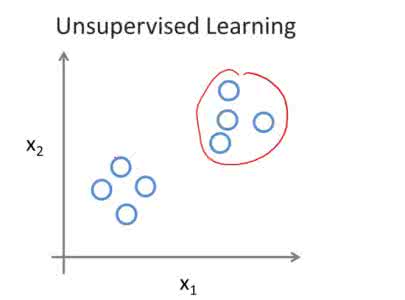Depth estimation is a fundamental issue in 4-D light field processing and analysis. Although recent supervised learning-based light field depth estimation methods have significantly improved the accuracy and efficiency of traditional optimization-based ones, these methods rely on the training over light field data with ground-truth depth maps which are challenging to obtain or even unavailable for real-world light field data. Besides, due to the inevitable gap (or domain difference) between real-world and synthetic data, they may suffer from serious performance degradation when generalizing the models trained with synthetic data to real-world data. By contrast, we propose an unsupervised learning-based method, which does not require ground-truth depth as supervision during training. Specifically, based on the basic knowledge of the unique geometry structure of light field data, we present an occlusion-aware strategy to improve the accuracy on occlusion areas, in which we explore the angular coherence among subsets of the light field views to estimate initial depth maps, and utilize a constrained unsupervised loss to learn their corresponding reliability for final depth prediction. Additionally, we adopt a multi-scale network with a weighted smoothness loss to handle the textureless areas. Experimental results on synthetic data show that our method can significantly shrink the performance gap between the previous unsupervised method and supervised ones, and produce depth maps with comparable accuracy to traditional methods with obviously reduced computational cost. Moreover, experiments on real-world datasets show that our method can avoid the domain shift problem presented in supervised methods, demonstrating the great potential of our method.
翻译:深度估算是4D光度实地处理和分析的一个根本问题。虽然最近受监督的基于学习的光度实地估算方法大大提高了传统优化方法的准确性和效率,但这些方法依靠的是利用地面深度图对光度实地数据进行培训,而地面深度图对于真实世界的光度实地数据来说是难以获得甚至无法获得的。此外,由于现实世界和合成数据之间不可避免的差距(或领域差异),在将经过合成数据培训的模型与真实世界数据进行总体比较时,它们可能严重性差。相比之下,我们提出了一种未经监督的基于学习的方法,该方法在培训期间并不要求地面深度的深度作为监督。具体地说,根据对光度深度图的独特地理测量结构的基本知识,我们提出了一种封闭度战略,以提高隐蔽区的准确性,我们在此过程中探索了光度实地观察子集之间的三角一致性,以估计初始深度地图,并利用不精确性损失的极限性损失来了解最终深度预测的可靠性。此外,我们采用了一个多尺度的网络,其高度精确性深度不要求作为培训过程中的深度。具体地深度深度,根据对光度对光度的精确度的精确度的精确度,我们的数据的精确度,我们的数据的精确度,我们提出了一种精确度分析方法,从而能够对前期测测测测测测测测地计算方法,从而显示我们之前的精确性地计算方法。




